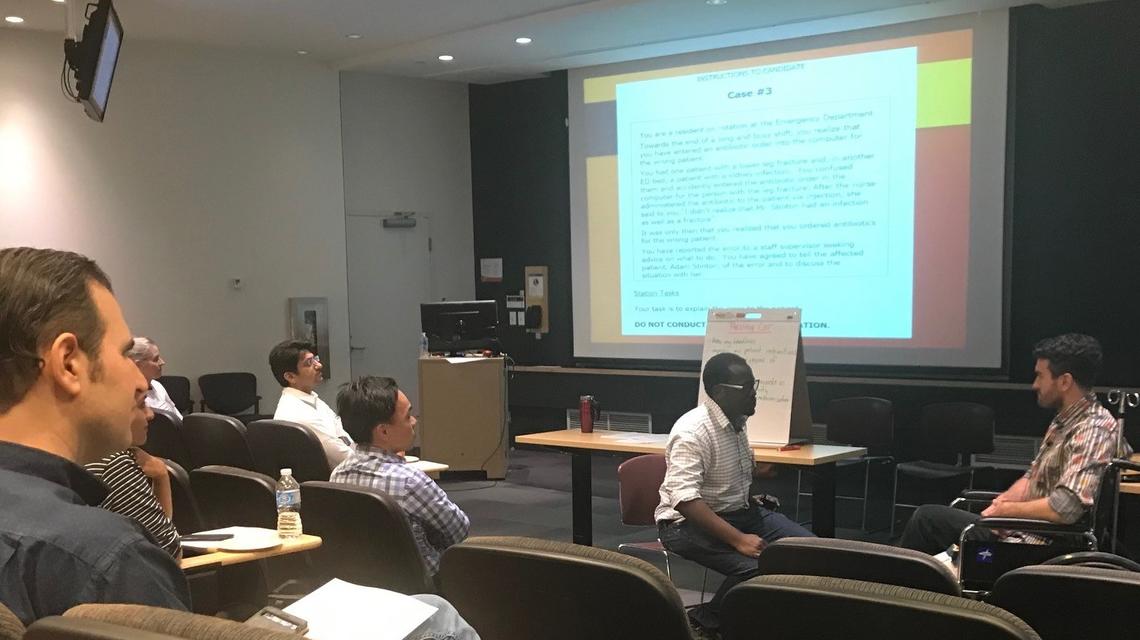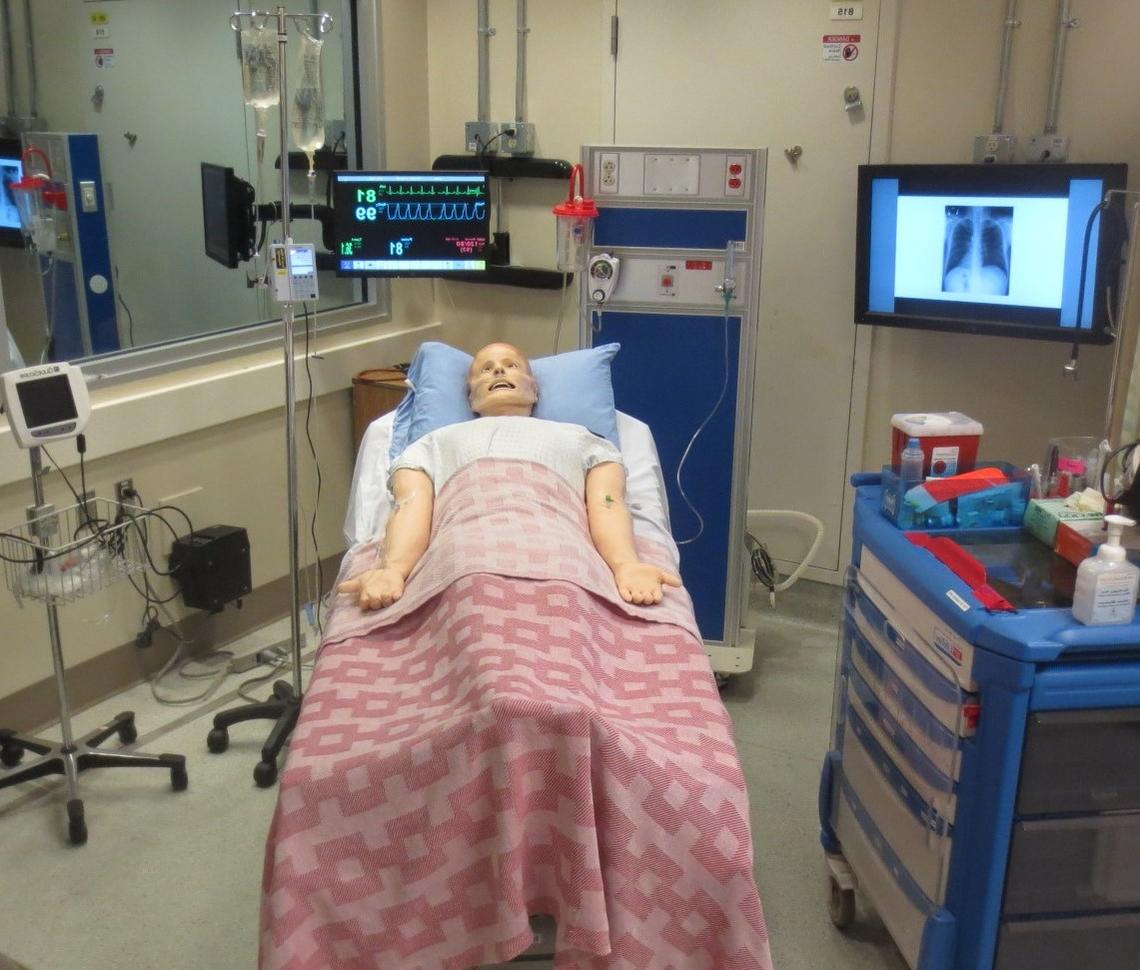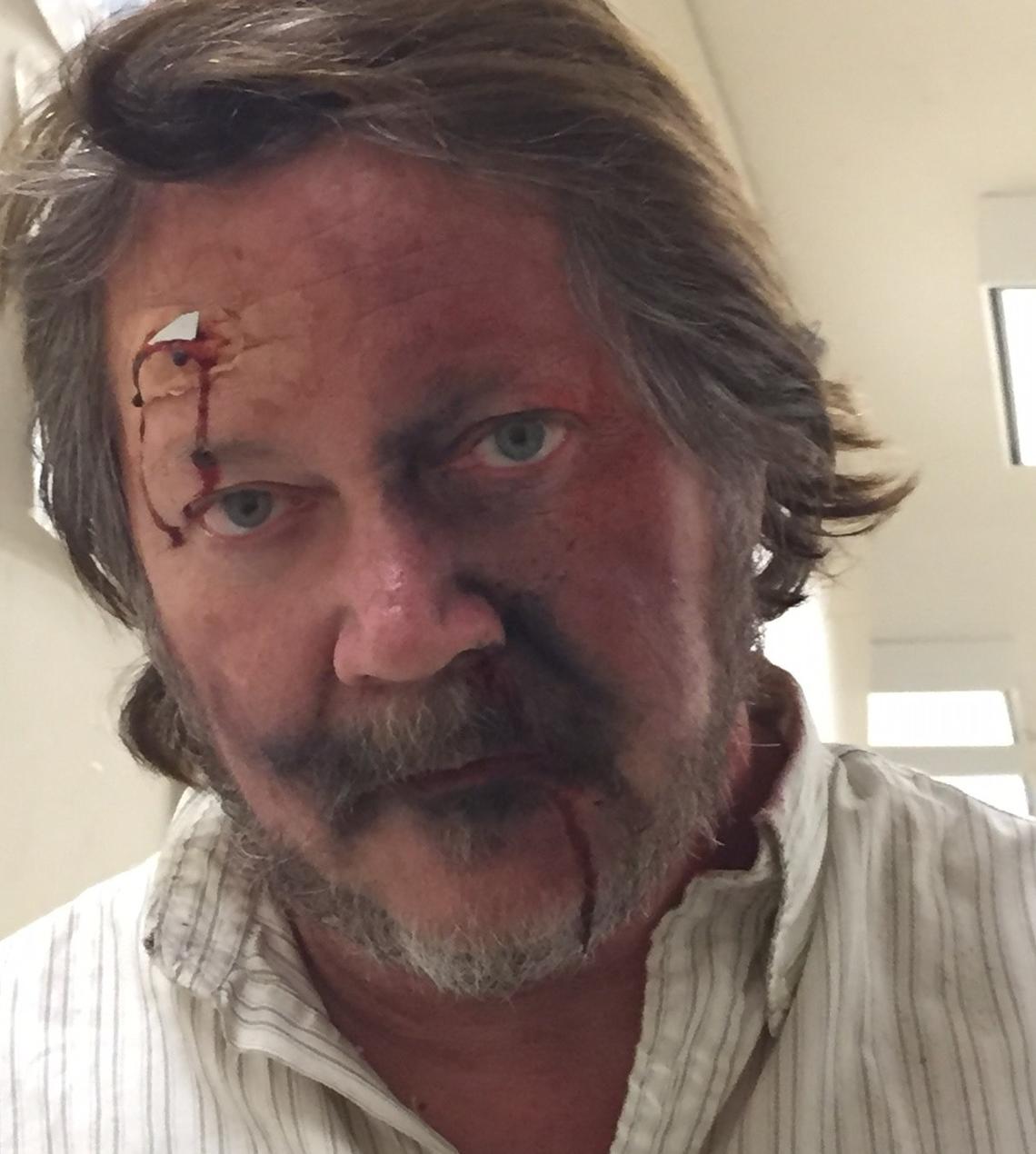The Standardized Patient Program
Standardized Patients (sometimes called Simulated Patients or Standardized Clients) are normally referred to as SPs. They have been a valued component of medical education and examination for several decades. They're the human resources required for many courses and examinations, both for the Cumming School of Medicine at the University of Calgary and for courses and certification examinations conducted by related professions.
SPs are individuals who are in generally good health, and come from all demographics of the population. SPs are trained together in groups so that each person presents a particular case in a standardized manner. This ensures that each exam candidate or medical student will have the same experience and opportunity to assess, diagnose and/or make a treatment plan. Many medical schools incorporate SPs, including the University of Toronto. University of Calgary Medical School was one of the earliest schools to use SPs.
Are you already an SP, but away from your computer and need to access SharePoint? Here you go!
Types of SP encounters
Unlike Instructional Resources such as print materials, electronic media or structural models, Standardized Patients provide interaction and feedback in real time in varying situations. SPs are part of education and examination for the faculties of Medicine and Nursing, and engaged by other associated professions. SPs fulfill many needs at the Cumming School of Medicine as well as other universities across the country. Click on the button to access a CBC interview.
Physical Exams
In Physical Exams (PEs), small groups of students learn specific anatomy, tests or procedures through hands-on experience guided by a preceptor.
The SP is essentially a live model for demonstration and exploration. You may be asked to perform a repetitive motion, have your abdomen palpated, your gait checked, your blood pressure taken - there are many procedures students must learn throughout their time in medical school.
Standard attire is gym shorts, sports bra for women, and a hospital gown. A small number of PE sessions may require bra-off for women, but these will be clearly identified prior to an SP registering for those sessions.
Physical exam sessions do not involve intimate or invasive procedures. Digital rectal, genital and female breast exams on actual SPs are not currently part of the curriculum at the Cumming School of Medicine.

Physical Exam
Communications
SPs realistically present the history, the affect and the symptoms of a patient. SP will be trained on all pertinent information: history of the present illness, past medical history, family history, social history. Other relevant information may include occupation, recent travel and risk factors. Each SP works with a small group of students, one of whom will take on the role of the physician. Peers and preceptor will observe the interaction from the adjoining room. At the conclusion of the encounter the SP will debrief with the student group to offer patient perspective.
OSCE
Much SP work is related to examinations for medical students or candidates qualifying for certification. Objective Structured Clinical Examinations (OSCEs) are secure, controlled, confidential undertakings. It is important that SPs are well-trained and consistent in their portrayal for these often high-stakes examinations.

Communications Interview/ OSCE History station
Lecture Demonstration
An SP may be engaged to portray a patient/case during a lecture or presentation. They may be utilized to demonstrate a physical procedure, or interact with an instructor to show how an interview might unfold.

SIM manikin
A limited roster of SPs are specially trained to work with SIM manikins, providing their voice from the control room while students take a history. The manikins simulate breath or bowel sounds, heart sounds, oxygen deprivation, seizures and many other things; the SP is simultaneously operating the computer so that these effects occur and changes in vital signs are displayed on the monitor. The SP also operates a second computer displaying x-rays, ECGs, lab work, blood tests, CAT scans or other test results.
It can sometimes feel like juggling chainsaws.
And sometimes it feels like the chainsaws are on fire.

ATSSL Simulation Suite
Inter-Professional Trauma Simulation
Once or twice a year, medical and related programs from the University of Calgary, SAIT and Mount Royal University bring students to the Health Sciences Centre and the Medical Skills Centre for a disaster/trauma simulation.
Four waves of learners, including medical and nursing students, EMTs, respiratory technicians and social workers, process through the event. They work in mixed groups of 5 or 6 individuals to assess & triage victims of a major incident.
SPs work in pairs as victims needing urgent medical assistance and/or as colleagues or family members supporting the victim. It is a long day. It can involve a lot of bruising and bleeding, appliqued lacerations and burns. Clean up is considerable - but it's an exciting and illuminating undertaking.

Trauma Simulation Victim

